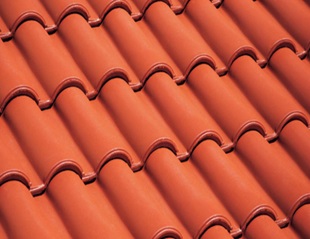
Roof tiles are a crucial component of roofing systems, offering not only protection from the elements but also contributing to the aesthetic appeal of a building. Roof tiles come in various materials, styles, and designs, each with unique characteristics and benefits.
Types of Roof Tiles.
>Clay Roof Tiles:
Clay roof tiles are one of the oldest and most traditional roofing materials, known for their durability and classic appeal.
Types:
Flat Tiles: Simple, flat clay tiles that overlap each other.
Pantiles: S-shaped tiles that create a rippling effect on the roof.
Roman Tiles: Similar to pantiles but with a flatter profile and a distinctive curve.
Barrel Tiles: Rounded tiles that interlock to form a continuous curved surface.
Benefits: Clay tiles are highly durable, fire-resistant, and environmentally friendly. They also offer excellent thermal insulation.
>Concrete Roof Tiles:
Concrete roof tiles are made from a mixture of sand, cement, and water, molded under high pressure.
Types:
Flat Profile: Smooth or textured surface, resembling slate or wood shakes.
Low Profile: Slightly curved tiles with a subtle wave pattern.
High Profile: Deeply curved tiles, similar to traditional clay barrel tiles.
Benefits: Concrete tiles are durable, cost-effective, and available in a wide range of colors and styles. They are also resistant to fire, insects, and rot.
>Slate Roof Tiles:
Slate roof tiles are made from natural stone, offering a unique and elegant appearance.
Types:
Standard Grade: Uniform thickness and size, typically used in regular patterns.
Textured Grade: Varying thicknesses and sizes, creating a rustic look.
Interlocking Slate: Specially designed to lock together, providing extra stability.
Benefits: Slate is extremely durable, fire-resistant, and low-maintenance. It provides a timeless, high-end look and can last for over a century.
>Metal Roof Tiles:
Metal roof tiles are lightweight and durable, available in various metals such as steel, aluminum, copper, and zinc.
Types:
Standing Seam: Vertical panels with raised seams.
Metal Shingles: Designed to resemble traditional shingles, shakes, or tiles.
Corrugated Metal: Wavy pattern, often used in industrial or modern designs.
Benefits: Metal tiles are lightweight, durable, and energy-efficient. They are resistant to extreme weather, fire, and pests. They also offer a modern and sleek appearance.
>Composite Roof Tiles:
Composite roof tiles are made from a blend of materials, including plastic, rubber, and other synthetic compounds.
Types:
Synthetic Slate: Mimics the look of natural slate.
Synthetic Shake: Resembles wood shakes.
Recycled Composite: Made from recycled materials, offering a sustainable option.
Benefits: Composite tiles are lightweight, durable, and often more affordable than natural materials. They are also resistant to impact, fire, and UV rays.
- High Quality Products
- Expert Installation Services
- Exceptional Client Service
